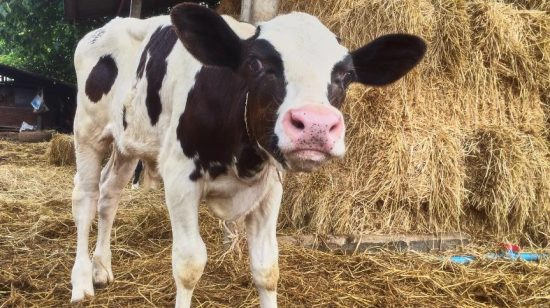How Long Do Hamsters Live as Pets? A Complete Guide
Uncover the lifespan of your furry companion. Find out how long do hamsters live as pets and get tips to enhance their well-being.
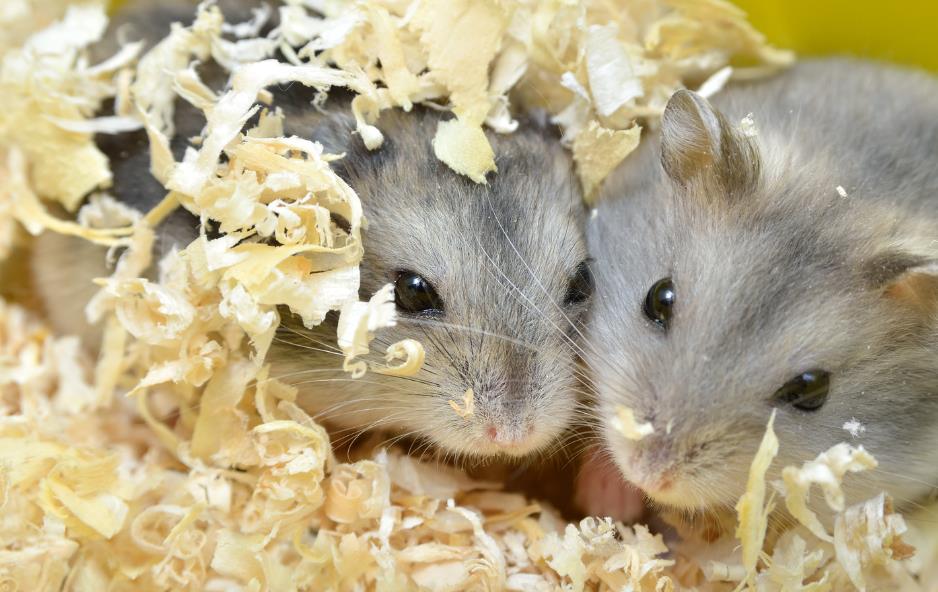
Have you ever wondered how long do hamsters live? Do you assume they have a short lifespan, or are you unaware of the factors that influence their longevity? Whether you’re considering getting a hamster as a pet or you already have one, understanding their lifespan and how to care for them is crucial.
Hamsters are popular pets known for their small size, adorable appearance, and playful nature. However, their lifespan can vary depending on several factors. In this complete guide, we will explore the average lifespan of pet hamsters, the factors that can influence their lifespan, common health challenges they may face, and expert care tips to help extend their life.
If you’re intrigued to discover how long hamsters can live and what you can do to ensure their well-being, let’s dive into this comprehensive guide. Get ready to gain valuable insights into the fascinating world of hamsters as we uncover the secrets to their longevity.
The Many Breeds of Pet Hamsters and Their Lifespans
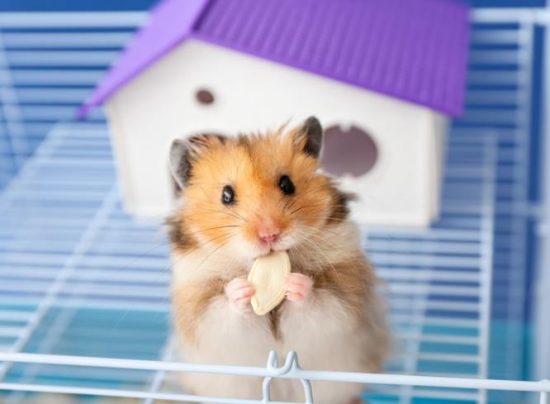
Hamsters come in various breeds, each with its own unique characteristics and lifespan. Understanding the differences between hamster breeds is crucial for better care. This section will explore the different breeds of pet hamsters and their lifespans. When choosing a hamster as a pet, it’s important to consider the specific characteristics and needs of each breed. Different hamster breeds have distinct temperaments, size variations, and care requirements.
For example, Syrian hamsters are one of the most popular pet hamster breeds. They are known for their larger size and solitary nature, preferring to live alone. Syrian hamsters have a lifespan of approximately 2-3 years, although some may live up to 4 years with proper care.
Dwarf hamsters, on the other hand, are smaller in size and are categorized into various breeds, such as Campbell’s dwarf hamsters, Winter White Russian dwarf hamsters, and Roborovski dwarf hamsters. Dwarf hamsters have a shorter lifespan compared to Syrian hamsters, typically ranging from 1.5-2 years.
The Roborovski hamster breed is known for its small size, agility, and energetic behavior. These tiny hamsters have a relatively longer lifespan compared to other dwarf hamster breeds, with an average lifespan of 3-3.5 years.
It’s essential to consider the specific needs and lifespan of each breed when selecting a hamster as a pet. This knowledge will help you provide the appropriate care and ensure a long and fulfilling life for your hamster companion.
Syrian, Dwarf, and Roborovski: Lifespan Variations
| Breed | Lifespan |
|---|---|
| Syrian Hamster | 2-3 years |
| Dwarf Hamster | 1.5-2 years |
| Roborovski Hamster | 3-3.5 years |
As depicted in the table above, the lifespan of hamsters can vary significantly between breeds. Syrian hamsters typically have the longest lifespan, followed by Roborovski hamsters and dwarf hamsters with the shortest lifespan.
Remember that these are average lifespans, and individual hamsters may live longer or shorter depending on various factors, including genetics, diet, exercise, and overall care.
Understanding the lifespan variations between different breeds of hamsters will help you make informed decisions about which type of hamster best suits your lifestyle and commitment level.
How Long Do Hamsters Live?
Hamsters in a domestic setting generally have a longer lifespan compared to their wild counterparts. This is due to several factors that contribute to their increased longevity.
Firstly, in a domestic environment, hamsters are provided with a controlled and safe living space. This means that they are protected from potential predators that could harm them in the wild. Additionally, the absence of natural threats ensures that they are less prone to accidents or injuries that could shorten their lifespan.
Furthermore, hamsters kept as pets have access to regular food and water. Pet owners can provide a balanced and nutritious diet that meets the specific nutritional needs of their hamster. This ensures that they receive proper nourishment, which can positively impact their overall health and lifespan.
Apart from a controlled environment and a well-balanced diet, domestic hamsters also receive regular veterinary care. Pet owners can schedule check-ups and vaccinations to prevent common health issues that could potentially shorten a hamster’s lifespan.
| Factors | Contributions to Longevity |
|---|---|
| Controlled environment | Protection from predators |
| Regular food and water | Proper nourishment for overall health |
| Veterinary care | Prevention and early detection of health issues |
Natural Factors Influencing a Hamster’s Lifespan
Hamsters in the wild face numerous challenges that directly affect their lifespan. Predators and environmental stressors play a significant role in determining how long a hamster survives in its natural habitat. Understanding these factors can provide valuable insights into the importance of a controlled environment for domestic hamsters.
Predators and Environmental Stress in the Wild
In the wild, hamsters face constant threats from predators such as birds of prey, snakes, and larger mammals. These natural predators pose a significant risk to hamsters’ lives, as they use their keen hunting instincts to track and hunt them.
Additionally, environmental stressors such as extreme temperatures, scarcity of food and water, and habitat disruptions further impact a wild hamster’s lifespan. Harsh climates, insufficient resources, and habitat destruction due to human activities can lead to increased stress and reduce a hamster’s chances of survival.
Comparing Domestic Versus Wild Hamster Lifespans
When comparing the lifespan of wild hamsters to those in domestic settings, several factors contribute to the differences observed. Domestic hamsters benefit from a controlled environment, access to regular food and water, and protection from natural predators. These factors significantly increase their overall lifespan compared to their wild counterparts.
In contrast, wild hamsters have to constantly search for food, water, and safe shelter, which puts them at a greater risk of encountering predators and experiencing stressful environments. As a result, their lifespan is generally shorter than that of domestic hamsters.
| Factors | Wild Hamsters | Domestic Hamsters |
|---|---|---|
| Predator Threats | High risk | Minimal to none |
| Environmental Stressors | Constant challenges | Controlled environment |
| Access to Resources | Limited and unpredictable | Regular supply |
| Physical Protection | Vulnerable to predators | Safe habitat |
Comparing wild and domestic hamster lifespans underscores the significance of providing a suitable environment for pet hamsters. By eliminating natural threats and ensuring regular care, pet owners can greatly improve their hamster’s chances of living a longer and healthier life.
Common Health Challenges Faced by Hamsters
While hamsters bring joy and companionship, they can also face various health challenges that may affect their lifespan. It is crucial for hamster owners to be aware of these common health issues and know how to detect and address them promptly.
Detecting and Addressing Heart and Kidney Diseases
Heart disease and kidney disease are two significant health challenges that hamsters can face. Heart disease in hamsters can include conditions such as cardiac arrhythmias or congestive heart failure. Similarly, kidney disease in hamsters can manifest as kidney failure or renal dysfunction.
Early detection of these conditions is essential for effective treatment. Watch out for symptoms such as lethargy, decreased appetite, weight loss, difficulty breathing, or changes in urine volume or consistency. If you notice any of these signs, it is crucial to consult a veterinarian who specializes in exotic pets.
Veterinary treatment may involve medications to regulate the heart or kidney function, as well as dietary modifications to support organ health. Providing a clean and stress-free environment with appropriate temperature and humidity can also help manage these conditions.
The Impact of Diabetes and Dental Problems on Lifespan
Diabetes and dental problems are two other health challenges that can affect the lifespan of hamsters. Diabetes in hamsters can occur due to various factors, including genetics, obesity, or a poor diet high in sugary foods. This condition can lead to significant health complications and a shorter lifespan.
Monitoring your hamster’s diet and ensuring a balanced nutrition plan can help prevent diabetes. Avoid feeding your hamster foods that are high in sugar or carbohydrates. Instead, provide a diet rich in fresh vegetables, high-quality hamster pellets, and occasional treats in moderation.
Dental problems in hamsters can include overgrown teeth, tooth decay, or dental infections. These issues can cause pain, discomfort, difficulty eating, and weight loss. Regularly check your hamster’s teeth for signs of overgrowth or abnormalities. Providing chew toys and appropriate bedding material for gnawing can help maintain dental health.
Optimizing Your Hamster’s Diet for a Long and Healthy Life
A proper diet is essential for a hamster’s overall health and lifespan. By providing your pet hamster with the right food, you can ensure they receive the necessary nutrients for optimal well-being. Choosing the correct diet for your hamster involves understanding their nutritional needs and selecting appropriate food options that promote their longevity.
Choosing the Right Food for Your Pet Hamster
When selecting food for your hamster, consider commercially produced hamster diets. These diets are specially formulated to meet the nutritional requirements of hamsters and provide a well-balanced combination of protein, carbohydrates, and fats. Look for hamster-specific food brands that offer high-quality ingredients and essential nutrients. Additionally, include occasional treats such as fruits, vegetables, and grains to add variety to their diet.
To ensure your hamster’s health, avoid feeding them foods that are toxic or harmful to their digestive system. Some examples include chocolate, caffeine, sugary foods, and highly processed human snacks. Always research and consult a veterinarian if you are unsure about the suitability of a particular food item.
Understanding the Risks of Poor Nutrition
Poor nutrition can significantly affect a hamster’s health and lifespan. Inadequate access to essential nutrients can lead to malnutrition, weakened immune system, and increased susceptibility to diseases. A diet lacking in the necessary vitamins and minerals can also cause deficiencies and affect the hamster’s overall well-being.
Moreover, an imbalanced diet, such as one that is high in fat or lacks fiber, can contribute to obesity, digestive problems, and dental issues in hamsters. Obesity can lead to a range of health complications and shorten a hamster’s lifespan. Providing a balanced and nutritious diet is vital for ensuring your hamster stays healthy and lives a long and fulfilling life.
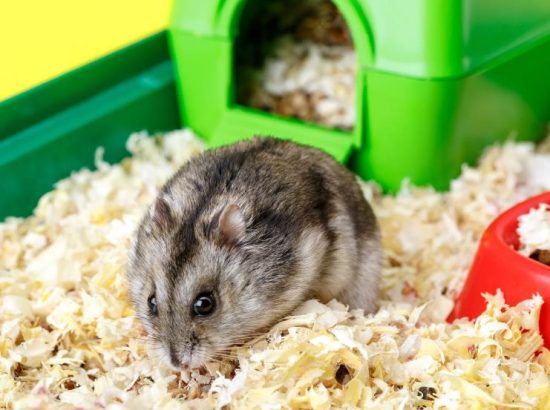
Creating the Perfect Habitat: Cage and Bedding Essentials
The quality of a hamster’s habitat plays a crucial role in their overall well-being and lifespan. In this section, we will explore the essentials of creating the perfect habitat for your pet hamster, including selecting the optimal enclosure size and features, choosing appropriate bedding materials, and maintaining cleanliness.
Selecting the Optimal Enclosure Size and Features
When it comes to selecting a hamster cage, size matters. A spacious enclosure allows your hamster to exercise and explore, promoting its physical and mental well-being. Larger enclosures also help reduce stress and prevent boredom.
Opt for a cage that provides ample space for your hamster to move around, with several levels or platforms for climbing and playing. Wire cages with a solid base are a popular choice, as they provide ventilation and prevent bedding from spilling out.
The Importance of Cleanliness and Non-toxic Bedding
Maintaining cleanliness in your hamster’s habitat is essential for their health. Regularly clean the cage, removing any waste and replacing soiled bedding. Avoid using scented cleaning products or disinfectants, as the strong odor can be harmful to your hamster’s sensitive respiratory system. Instead, opt for mild, hamster-safe cleaning solutions.
When it comes to bedding, choose options that are safe and comfortable for your hamster. Paper-based bedding, such as shredded paper or paper pellets, is a popular choice as it is absorbent, non-toxic, and easily disposable. Avoid cedar or pine bedding, as these can release harmful chemicals and be harmful to your hamster’s respiratory system.
| Bedding Material | Advantages | Disadvantages |
|---|---|---|
| Paper-based bedding | – Absorbent – Non-toxic – Easy to dispose of |
– Can be pricey – May require frequent changing |
| Aspen bedding | – Natural and safe – Good odor control |
– May not be as absorbent – More expensive |
| Cellulose bedding | – Highly absorbent – Dust-free |
– Can be expensive – May not control odor as well |
| Cotton bedding | – Soft and cozy – Absorbent |
– Can be ingested, causing health issues – Not suitable for all hamsters |
| Corncob bedding | – Natural and safe – Good odor control |
– Can be dusty – Not very absorbent |
How Do I Extend My Hamster’s Life?
Ensuring the long and healthy lifespan of your hamster requires expert care and attention. By following these valuable tips, you can enhance your hamster’s well-being and extend their time with you.
Regular Health Checkups and Disease Prevention
Regular health checkups are essential for monitoring your hamster’s overall health and detecting any potential issues early on. Schedule regular visits with a veterinarian who specializes in small animals to ensure your hamster receives the proper care and necessary vaccinations. This proactive approach to healthcare can significantly contribute to extending your hamster’s lifespan.
Additionally, proper disease prevention measures play a crucial role in keeping your hamster healthy. Implementing good hygiene practices, such as regularly cleaning their cage, providing fresh food and water, and maintaining a clean and safe environment, can help prevent the spread of diseases and ensure your hamster’s well-being.
The Significance of Frequent Interaction and Bonding
Hamsters thrive on social interaction and bond with their human caregivers. Taking the time to interact with your hamster regularly can significantly contribute to their mental and emotional well-being, ultimately extending their lifespan.
Engage in activities such as gentle handling, playing with toys, and providing opportunities for exercise and exploration outside of their cage. This interaction helps alleviate stress, promotes mental stimulation, and strengthens the bond between you and your hamster.
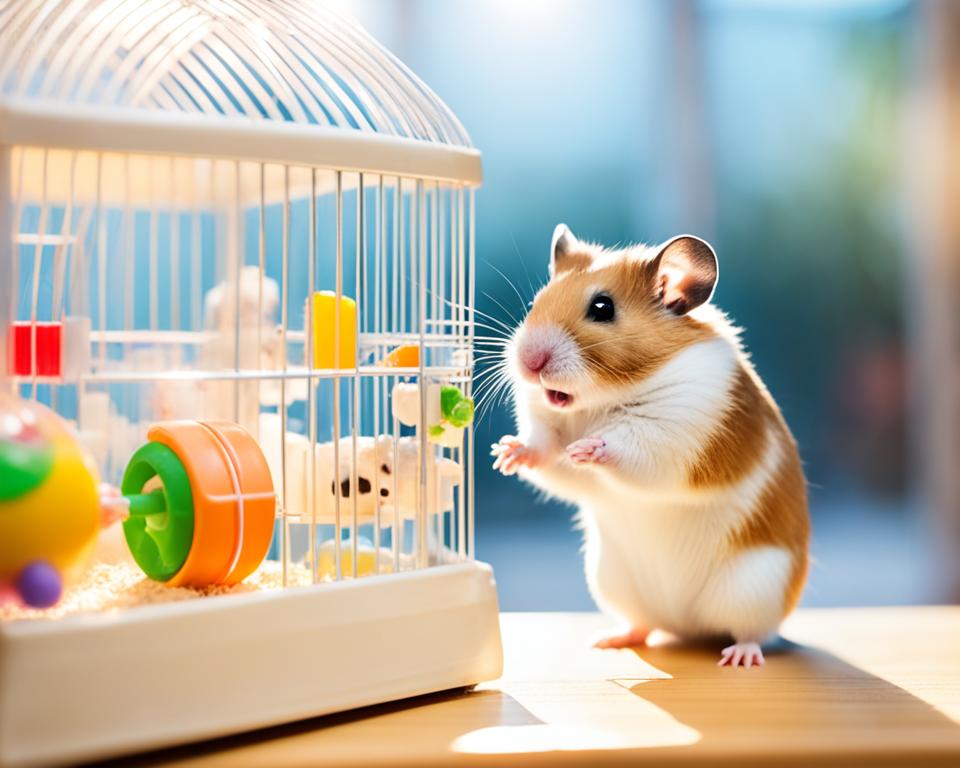
FAQs on How long do hamsters live
What factors influence the lifespan of different hamster breeds?
The lifespan of hamster breeds can vary. Syrian hamsters typically live for 2-3 years, while Dwarf hamsters have a lifespan of around 1-2 years. Roborovski hamsters are known to live for approximately 3-4 years.
How long do hamsters live in a domestic setting?
Hamsters living in a domestic setting generally have a longer lifespan compared to their wild counterparts. On average, a domestic hamster can live for 2-3 years, but with proper care, they can surpass this lifespan.
What are the natural factors that influence a hamster’s lifespan?
Hamsters in the wild face challenges such as predators and environmental stressors that can impact their lifespan. In domestic settings, hamsters are protected from these factors, which contributes to their increased longevity.
What are the common health challenges faced by hamsters?
Hamsters can experience health issues such as heart disease, kidney disease, diabetes, and dental problems. Early detection and proper treatment are crucial to ensure a longer and healthier life for your pet.
What should I feed my hamster to extend its life?
It is important to provide a balanced and nutritious diet for your hamster. Commercially produced hamster diets and occasional treats are suitable, but avoid feeding them foods that are high in sugar, salt, or fat.
How can I create the perfect habitat for my hamster?
Select a cage that is appropriately sized for your hamster and provides enough space for exercise and exploration. Use non-toxic bedding materials and maintain cleanliness to ensure a safe and comfortable environment for your pet.
How can I stimulate my hamster mentally and physically?
Provide a variety of toys, tunnels, and exercise wheels to keep your hamster mentally stimulated and physically active. Regular playtime outside of their cage can also help promote a healthy and fulfilling life.
What are some expert care tips to extend my hamster’s life?
Regular health checkups, disease prevention measures, and proper interaction and bonding are essential for extending your hamster’s life. Proactive care and attention can have a positive impact on your hamster’s overall well-being and longevity.


